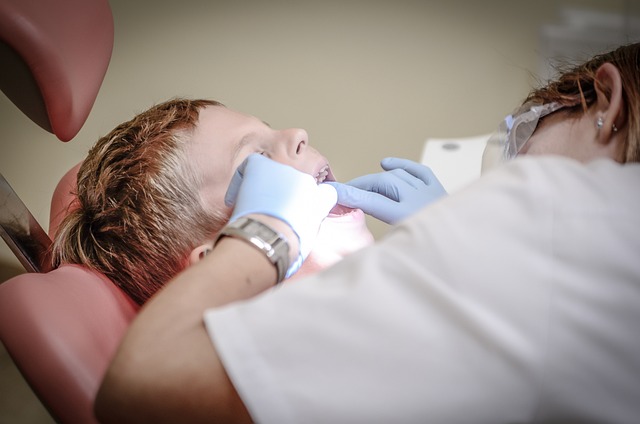Chewing Gum with a Retainer: Dental Dos and Don’ts
Are you a proud owner of a retainer, diligently taking care of your dental health? If so, you might have wondered about the do’s and don’ts when it comes to chewing gum. While it’s common knowledge that chewing gum can have its benefits, it’s crucial to navigate this sticky situation with caution to avoid any potential harm. In this article, we will explore the dental dos and don’ts of chewing gum with a retainer, equipping you with the knowledge you need to maintain a healthy smile. So, put on your dental detective hat, and let’s dive into the world of chewing gum and retainers!
1. The Importance of Oral Hygiene: Maintaining Dental Health with a Retainer and Chewing Gum
Oral hygiene plays a crucial role in maintaining overall dental health, and this includes taking care of your teeth with the help of a retainer and chewing gum. Both of these can contribute significantly to the well-being of your teeth and gums, ensuring a healthy and beautiful smile.
A retainer is a dental device often used after orthodontic treatment to hold the teeth in their new position. It is typically made of plastic or metal and can be removable or fixed. By wearing a retainer as instructed by your orthodontist, you can prevent your teeth from shifting back to their original position, which can undo the progress made by braces or aligners. Retainers are essential for maintaining the alignment of your teeth and ensuring the longevity of your orthodontic treatment.
- Preventing tooth movement: The primary purpose of a retainer is to prevent your teeth from moving back to their original misaligned positions.
- Preserving orthodontic treatment results: Wearing a retainer as prescribed by your orthodontist helps maintain the results achieved through braces or aligners.
- Protecting against teeth grinding: A retainer can also act as a protective barrier between your upper and lower teeth, minimizing the effects of teeth grinding or clenching.
Chewing gum, when done correctly, can also contribute to your oral hygiene routine. It stimulates saliva production, which helps wash away food particles and neutralize acids in the mouth. However, it is important to choose sugar-free gum to avoid potential tooth decay. Chewing gum can be an excellent addition to your oral hygiene practices, but it should never replace brushing and flossing.
- Increased saliva production: Chewing gum stimulates saliva flow, which aids in neutralizing acids and helps remineralize tooth enamel.
- Reduced dry mouth: If you suffer from dry mouth, chewing sugar-free gum can help alleviate symptoms by increasing saliva production.
- Fresh breath: Chewing gum with a fresh flavor can temporarily mask bad breath and leave your mouth feeling refreshed.
2. Dos and Don’ts: How to Properly Chew Gum with a Retainer
When it comes to enjoying gum while wearing a retainer, there are certain dos and don’ts that you should keep in mind. Following these guidelines will help you maintain the integrity of your retainer and ensure optimal oral health. Here are the key points to remember:
- Do:
- Choose sugar-free gum: Opting for sugar-free gum is essential to prevent any potential damage to your teeth and retainer. Sugar can promote plaque buildup and increase the risk of cavities.
- Chew with caution: While it’s generally safe to chew gum with a retainer, it’s important to do so with caution. Avoid excessive force or aggressive chewing, as it can cause your retainer to become loose or damaged.
- Keep it brief: Limit your gum-chewing sessions to shorter periods of time. Prolonged chewing may strain your jaw and increase the risk of discomfort.
- Don’t:
- Use sticky or hard gum: Sticky or hard gum can easily get stuck in your retainer, making it difficult to clean and potentially causing damage. Stick to softer gum options that are easier to remove.
- Forget to remove your retainer: Always remove your retainer before enjoying gum. Chewing gum with your retainer in place can lead to unnecessary wear and tear.
- Neglect oral hygiene: Even though you may be chewing gum, it’s important to maintain your regular oral hygiene routine. Brushing your teeth and cleaning your retainer after chewing gum will help prevent any buildup of bacteria or plaque.
By following these simple dos and don’ts, you can continue to enjoy chewing gum while wearing your retainer without compromising its effectiveness or the health of your teeth.

3. Understanding the Benefits: Chewing Gum as a Complementary Tool for Retainer Wearers
Retainers play a crucial role in maintaining the alignment and stability of your teeth after orthodontic treatment. While diligently wearing your retainer as prescribed by your orthodontist is essential, there are additional tools that can complement the retention process. One such tool that has gained recognition among retainer wearers is chewing gum. Yes, you read that right! Chewing gum can provide several benefits that aid in the overall success of your retainer treatment.
So, why is chewing gum a valuable addition to your retainer routine? Let’s explore the advantages:
- Jaw Muscle Exercise: Chewing gum helps exercise your jaw muscles, promoting their strength and flexibility. This can aid in preventing muscle stiffness and discomfort, especially during the initial phases of wearing a retainer.
- Saliva Production: Chewing gum stimulates saliva production, which is beneficial for retainer wearers. Increased saliva flow helps keep your mouth moist and can assist in minimizing the accumulation of bacteria and plaque on your retainer.
- Retainer Stability: The act of chewing gum can create a gentle pressure on your retainer, ensuring it stays snugly in place. This constant pressure can contribute to the retention of your teeth’s alignment, enhancing the effectiveness of your retainer.

4. Dental Care Tips: Precautions to Take When Chewing Gum with a Retainer
When wearing a retainer, it is important to take certain precautions when chewing gum to ensure the longevity and effectiveness of your dental treatment. Here are some helpful tips to keep in mind:
- Choose sugar-free gum: Opt for sugar-free gum instead of regular gum as it reduces the risk of tooth decay and cavities. Sugar-free gum is a better option for maintaining oral health with a retainer.
- Avoid sticky or hard gum: Stay away from sticky or hard gum that can damage your retainer. These types of gum are more likely to get stuck on the wires or brackets, potentially leading to a broken or bent retainer. Stick to softer gum options to protect your dental appliance.
- Remove your retainer: It is highly recommended to remove your retainer before chewing gum. This eliminates the risk of gum sticking to the retainer and causing damage. Remember to store your retainer safely in its case while you enjoy your gum.
- Chew slowly and gently: When chewing gum with a retainer, adopt a slow and gentle chewing motion. Avoid excessive force or aggressive chewing, as it can strain the retainer and increase the chances of it getting damaged.
By following these precautions, you can enjoy chewing gum without compromising the effectiveness of your retainer or risking potential damage. Remember, a little care goes a long way in maintaining a healthy and well-functioning dental appliance.
5. Debunking Myths: Addressing Common Misconceptions about Chewing Gum and Retainers
There are many myths and misconceptions surrounding the use of chewing gum and retainers. Let’s set the record straight and debunk some of the most common ones:
Myth 1: Chewing gum can damage your teeth.
- Fact: While chewing gum with excessive sugar content can contribute to tooth decay, sugar-free gum can actually be beneficial. It stimulates saliva production, which helps neutralize acids and wash away food particles, promoting better oral health.
- Tip: Look for gum with the American Dental Association (ADA) seal, indicating it is safe for your teeth.
Myth 2: Wearing a retainer will make your teeth shift back to their original position.
- Fact: Retainers are designed to prevent teeth from shifting and maintain the results achieved through orthodontic treatment. However, if you don’t wear your retainer as prescribed by your orthodontist, there is a risk of teeth moving.
- Tip: Follow your orthodontist’s instructions and wear your retainer as directed to ensure long-lasting results.

6. Choosing the Right Gum: Recommendations for Retainer-Friendly Chewing Gum Brands
When it comes to selecting the right chewing gum for those who wear retainers, it is crucial to choose brands that are retainer-friendly. Not all chewing gums are created equal, and some can potentially damage or stick to your retainers, causing inconvenience and potential harm. To help you make an informed choice, we have compiled a list of recommendations for retainer-friendly chewing gum brands:
- Xylitol-based gums: Chewing gums that contain xylitol are often a safe choice for individuals with retainers. Xylitol is a natural sweetener that promotes dental health by reducing the risk of tooth decay. Look for gums that have xylitol listed as one of the main ingredients.
- Sugar-free gums: Opting for sugar-free gums is another smart choice for retainer wearers. These gums contain alternative sweeteners like sorbitol or mannitol, which are less likely to cause plaque buildup or stick to your retainer.
- Soft gums: Choosing a gum with a soft texture can help minimize the risk of damaging your retainers. Soft gums are less likely to get stuck or adhere to your orthodontic appliance, ensuring a hassle-free chewing experience.
Remember, it is always recommended to consult your orthodontist or dental professional for personalized advice on selecting the most suitable chewing gum for your specific retainer type. By making the right gum choice, you can enjoy the benefits of chewing while maintaining the integrity of your retainers.

7. Embracing a Healthy Smile: Balancing Retainer Use and Chewing Gum for Optimal Dental Care
In order to maintain a healthy smile, it is important to strike a balance between wearing your retainer and enjoying chewing gum. While wearing a retainer is crucial for maintaining the alignment of your teeth, chewing gum can have certain benefits for your dental care. Here are some key points to consider when it comes to embracing a healthy smile:
- Retainer Use: Your retainer plays a vital role in preserving the results of orthodontic treatment. It helps to keep your teeth in their proper position and prevents any shifting that may occur over time. Following your orthodontist’s instructions, wear your retainer as recommended to ensure the best outcome.
- Chewing Gum: Contrary to popular belief, chewing sugar-free gum can actually be beneficial for your dental health. It stimulates saliva production, which aids in neutralizing acids and washing away food particles. Additionally, chewing gum can help strengthen your jaw muscles and reduce the risk of tooth decay.
It is important to note that chewing gum should not replace proper oral hygiene practices such as brushing and flossing. Make sure to choose sugar-free gum to avoid any potential harm to your teeth. By finding a balance between wearing your retainer and chewing gum in moderation, you can optimize your dental care and maintain a healthy smile.
Frequently Asked Questions
Q: Can I chew gum while wearing a retainer?
A: It is generally not recommended to chew gum while wearing a retainer. Chewing gum can cause damage to the retainer and affect its effectiveness in straightening your teeth.
Q: What types of gum should I avoid?
A: Avoid sticky or hard gums that require excessive force to chew. These can easily get stuck in your retainer or even cause it to break.
Q: Are there any specific types of gum that are safe to chew with a retainer?
A: Sugar-free, soft gums that are easy to chew are generally considered safe to use with a retainer. However, it is always best to consult your orthodontist for specific recommendations based on your retainer type and individual circumstances.
Q: How can chewing gum affect the lifespan of my retainer?
A: Chewing gum can increase the wear and tear on your retainer, potentially shortening its lifespan. The constant pressure and movement from chewing gum can weaken the retainer, making it less effective in maintaining your teeth’s alignment.
Q: Can chewing gum affect the fit of my retainer?
A: Yes, chewing gum can potentially alter the fit of your retainer. The pressure exerted while chewing can cause the retainer to become loose or even distort its shape, compromising the desired results of your orthodontic treatment.
Q: Should I remove my retainer before chewing gum?
A: It is generally advised to remove your retainer before chewing gum. This helps protect the retainer from damage and ensures that the gum does not interfere with the retainer’s ability to properly align your teeth.
Q: How should I clean my retainer after chewing gum?
A: After removing your retainer, rinse it with lukewarm water to remove any gum residue. You can also use a soft toothbrush and non-abrasive toothpaste to gently clean the retainer. Avoid using hot water or harsh chemicals, as they can damage the retainer material.
Q: Is there any alternative to chewing gum with a retainer?
A: If you have a strong urge to chew, consider using sugar-free mints or sucking on a piece of sugar-free candy instead. These alternatives can provide a similar sensory experience without the potential risks associated with chewing gum.
Q: What should I do if my retainer gets damaged while chewing gum?
A: If your retainer gets damaged while chewing gum, contact your orthodontist as soon as possible. They will assess the extent of the damage and provide guidance on whether a repair is needed or if a replacement retainer is necessary.
In Conclusion
In conclusion, when it comes to chewing gum with a retainer, there are a few key takeaways to keep in mind. Firstly, it is generally best to avoid chewing gum altogether, as it can increase the risk of damage to your retainer and teeth. However, if you absolutely must chew gum, opt for sugar-free options to minimize the potential harm to your dental health.
Additionally, always remove your retainer before chewing gum to prevent it from becoming stuck or damaged. Remember to clean your retainer thoroughly after every meal or snack, as residual gum can be difficult to remove and may lead to bacterial growth.
Lastly, be sure to consult with your orthodontist or dentist for personalized advice on how to best care for your retainer while enjoying the occasional indulgence of chewing gum.
By following these dental dos and don’ts, you can maintain a healthy and functional retainer, ensuring a confident smile and optimal oral health.






